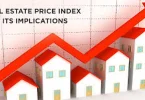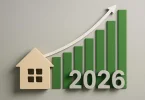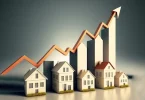The real estate industry is constantly evolving, driven by changing buyer preferences, technological innovation, and urbanization. Understanding new real estate development trends is crucial for developers, investors, and buyers to make informed decisions, stay competitive, and identify opportunities in a rapidly shifting market.
This guide explores the latest trends shaping residential, commercial, and mixed-use real estate developments worldwide.
1. Sustainable and Green Developments

Sustainability is no longer optional in real estate. Developers are increasingly focusing on:
- Energy-efficient buildings
- Solar panels and renewable energy integration
- Smart water and waste management
- Green roofs, walls, and landscaped areas
Eco-friendly properties not only reduce environmental impact but also attract premium buyers and tenants who prioritize sustainability.
2. Smart Homes and PropTech Integration
The integration of technology into real estate is transforming how people live and work. Modern developments include:
- Automated lighting and climate control
- AI-powered security systems
- Smart appliances and IoT-enabled devices
- Digital property management
Smart homes are increasingly popular among tech-savvy buyers and are considered a key selling point in new developments.
3. Mixed-Use Developments
Urbanization and lifestyle changes have accelerated the growth of mixed-use projects, which combine:
- Residential units
- Commercial spaces
- Retail and entertainment
- Community and recreational areas
These developments create vibrant, self-contained communities that meet residents’ living, working, and leisure needs in one location.
4. Co-Living and Shared Spaces
The rise of urbanization, high property costs, and flexible lifestyles has popularized co-living:
- Shared apartments for students, young professionals, and remote workers
- Flexible leasing and communal amenities
- Affordable yet modern living options
Co-living provides a community-driven lifestyle while making urban living more accessible.
5. Wellness-Oriented Design
Post-pandemic awareness has increased demand for wellness-focused properties:
- Natural light and ventilation
- Open green spaces
- Fitness and recreation facilities
- Air and water quality enhancements
Developments emphasizing health and well-being are gaining attention from buyers and tenants alike.
6. Adaptive Reuse and Urban Regeneration
Redeveloping underutilized or old properties is becoming a smart development trend:
- Transforming industrial warehouses into lofts or offices
- Revitalizing historic buildings for modern use
- Converting old malls into mixed-use spaces
Adaptive reuse saves costs, preserves heritage, and meets urban demand efficiently.
You may also like it:
Steps to Buy Your First Dream Home | Complete Guide
Affordable Home Buying Options Online: Complete Guide
Housing Market Trends and Updates: 2026 Insights
7. Sustainable Transportation and Connectivity
New real estate developments increasingly prioritize location and connectivity:
- Proximity to public transit
- Bike lanes and pedestrian-friendly infrastructure
- Integration with metro, rail, or bus systems
Connected developments enhance property value and attract residents seeking convenient commuting options.
8. Focus on Affordable Housing

Affordable housing continues to be a top priority in many cities:
- Government-backed housing schemes
- Cost-effective construction methods
- Modular and prefabricated homes
Developers are innovating to provide high-quality housing at lower costs, addressing urban demand and population growth.
9. Modular and Prefabricated Construction
Prefabrication is revolutionizing real estate development:
- Faster construction timelines
- Lower labor costs
- Reduced material wastage
- Consistent quality
This trend is expected to grow, especially in high-demand urban areas where speed and efficiency are crucial.
10. Integration of AI and Data Analytics
Data-driven development is transforming planning and decision-making:
- Market demand forecasting
- Pricing and valuation insights
- Smart infrastructure planning
- Energy and maintenance optimization
AI tools help developers create properties that are aligned with market trends and future needs.
Conclusion
The new real estate development trends indicate a market focused on sustainability, technology, flexibility, and community-driven living. Developers and investors who embrace these trends can meet evolving buyer expectations, maximize returns, and create long-term value. From smart homes and mixed-use communities to wellness-oriented designs and modular construction, these trends are shaping the future of real estate.
FAQs About New Real Estate Development Trends
1. What are the latest trends in real estate development?
Key trends include sustainable and green buildings, smart homes, mixed-use developments, co-living spaces, wellness-focused designs, and modular construction.
2. Why is sustainability important in new developments?
Sustainable properties reduce environmental impact, lower operational costs, and attract eco-conscious buyers and tenants.
3. What is the role of technology in modern real estate?
PropTech, AI, and IoT improve security, energy efficiency, building management, and overall convenience for residents.
4. What are mixed-use developments?
Mixed-use developments combine residential, commercial, retail, and recreational spaces in a single location, creating vibrant communities.
5. How is co-living changing urban housing?
Co-living provides affordable, flexible housing with shared amenities, catering to students, young professionals, and remote workers.






